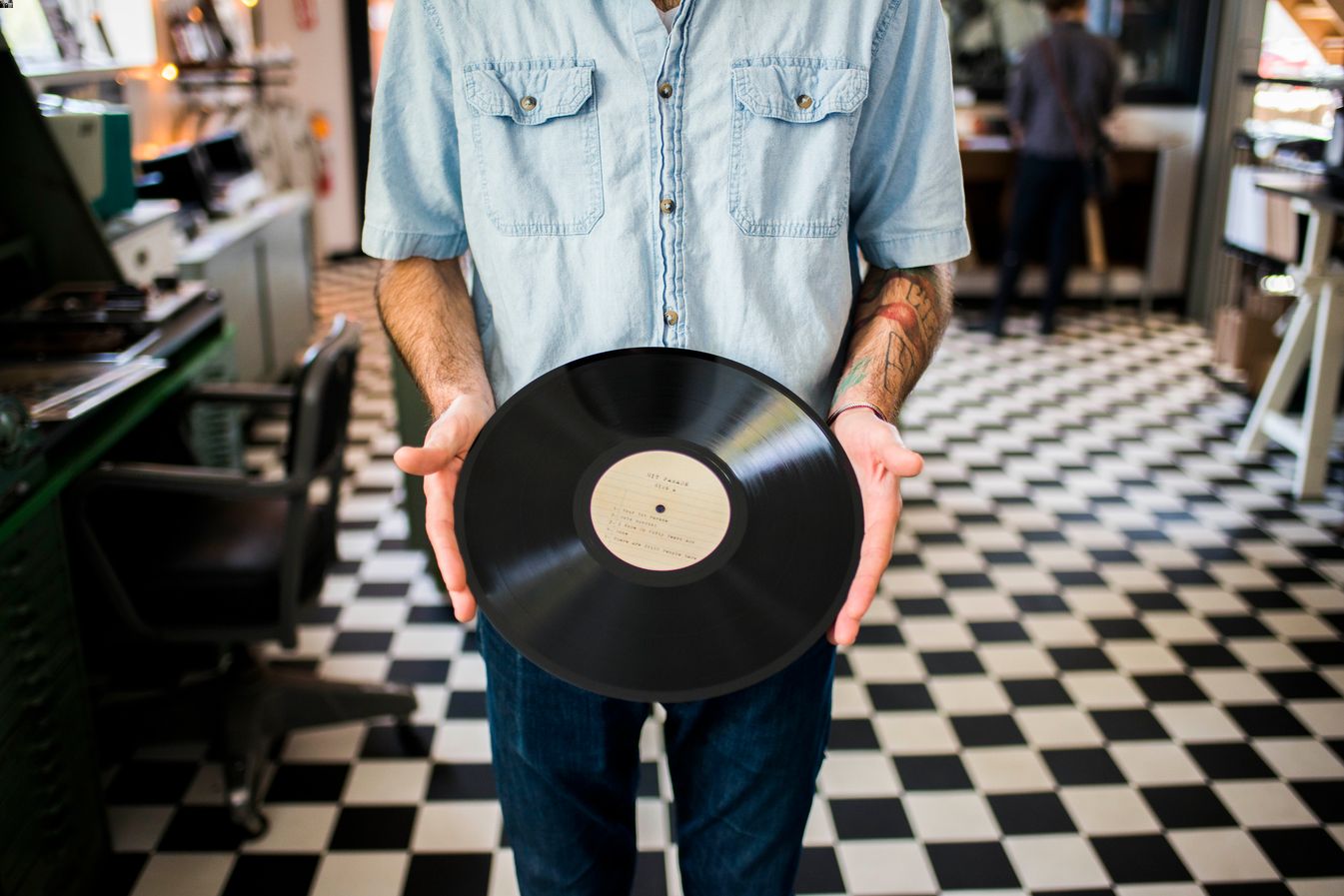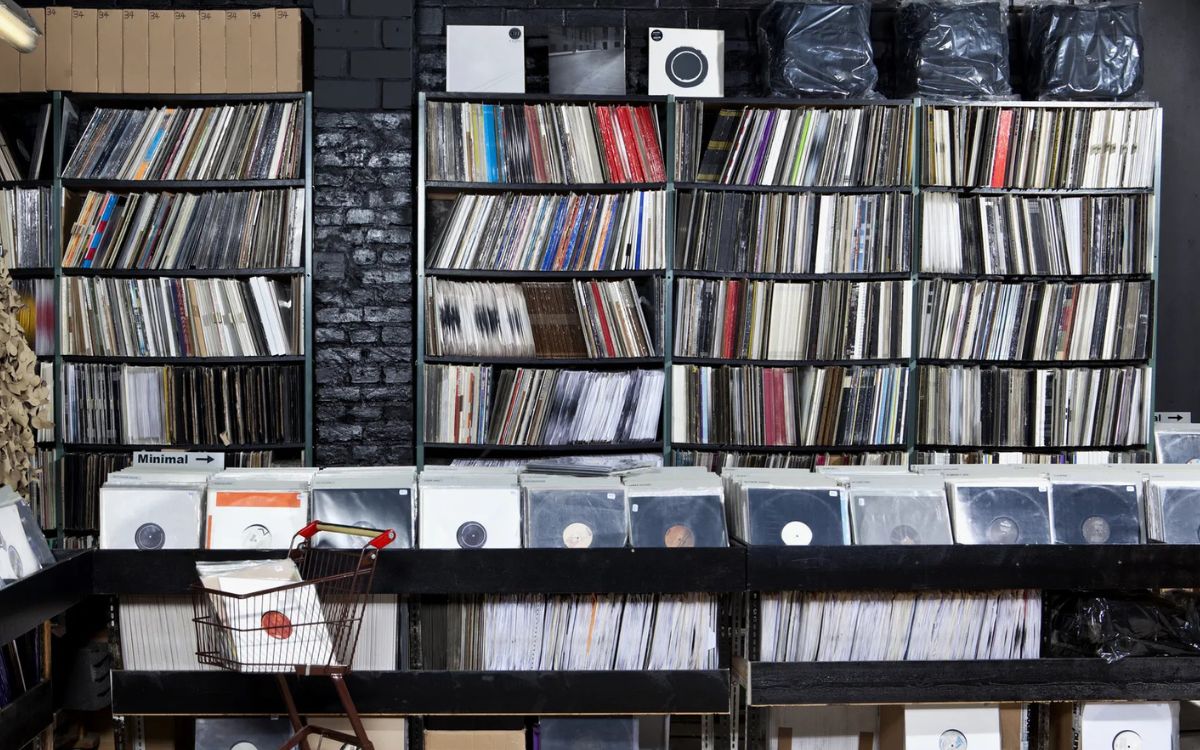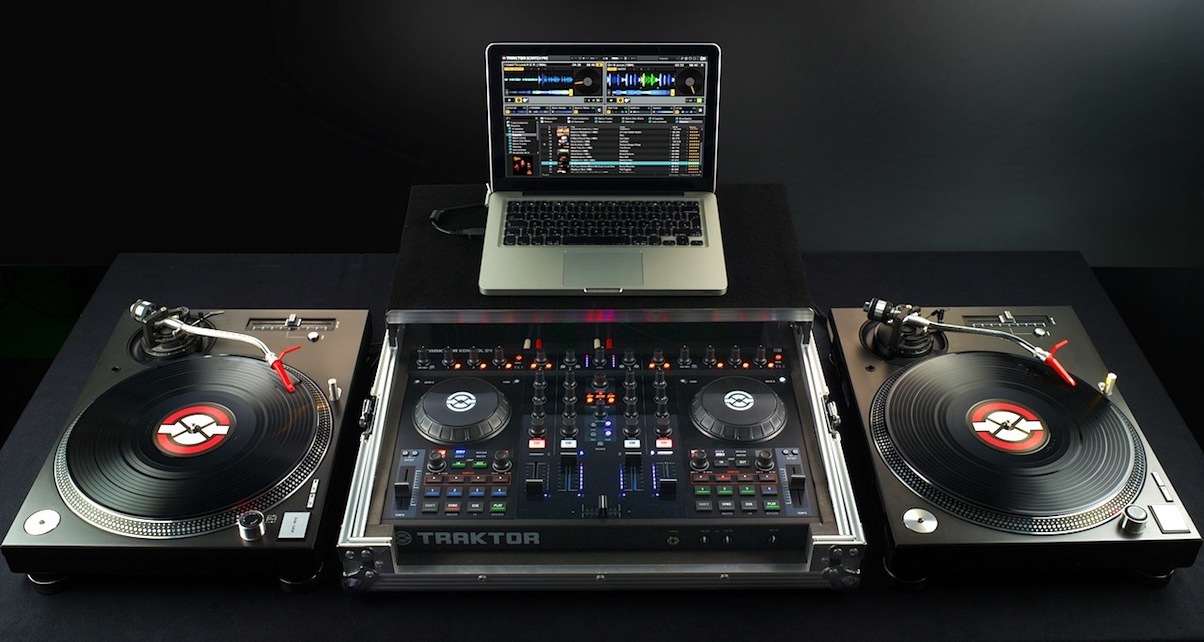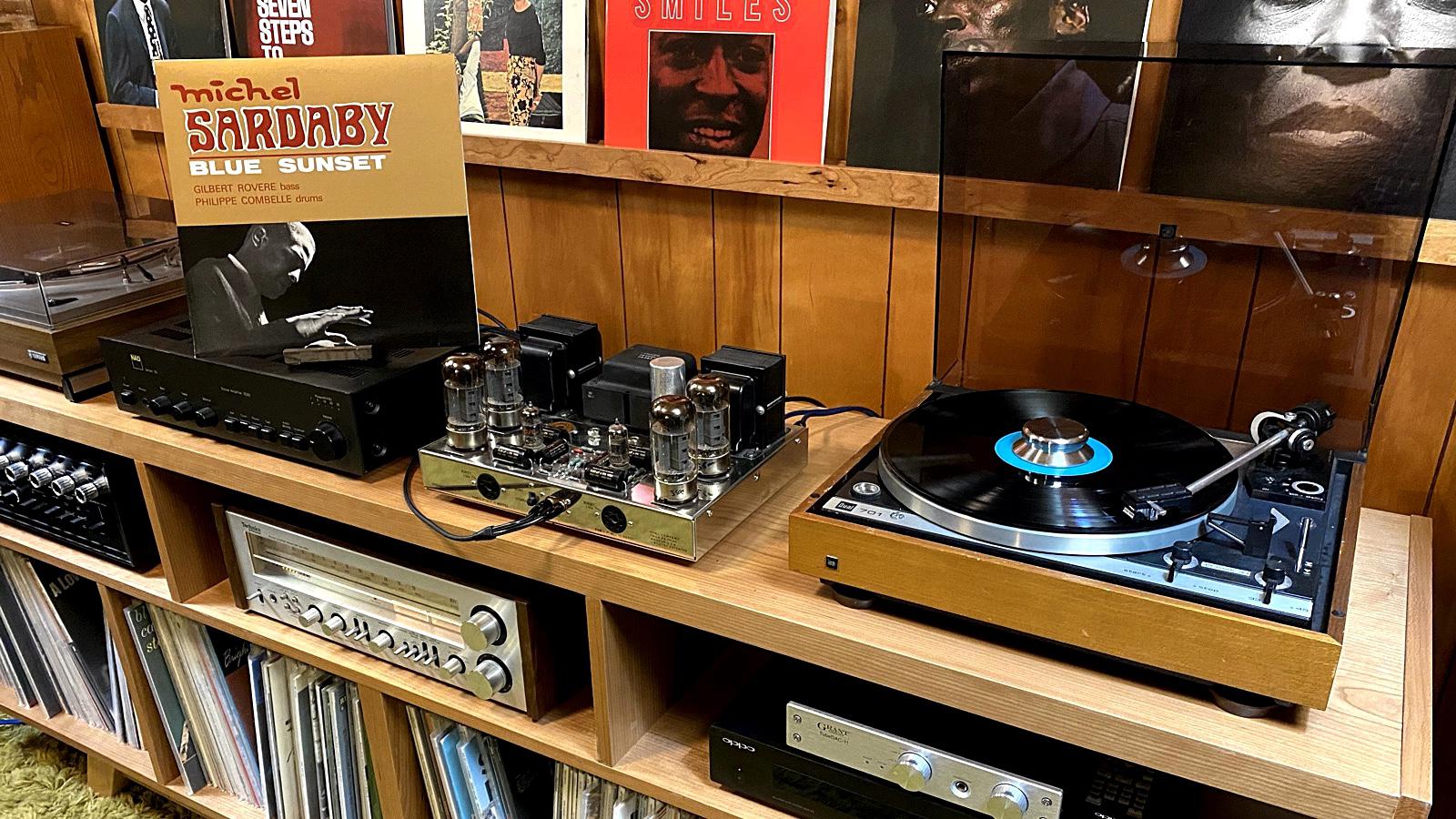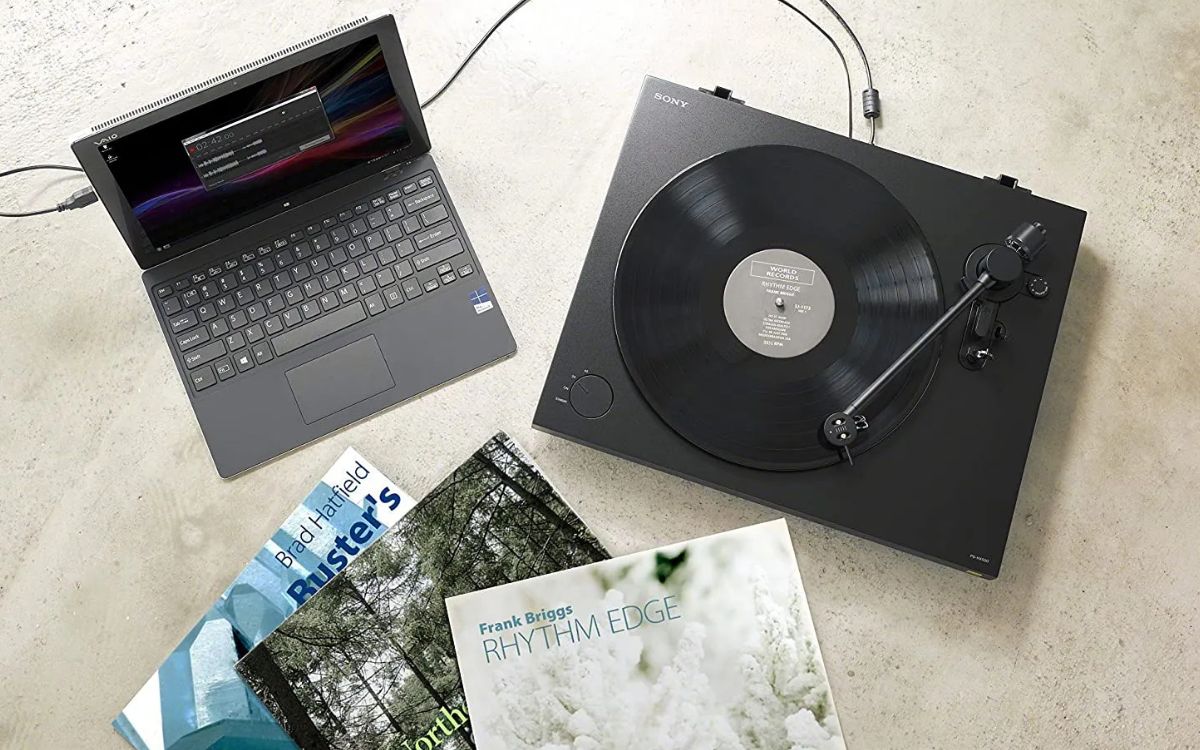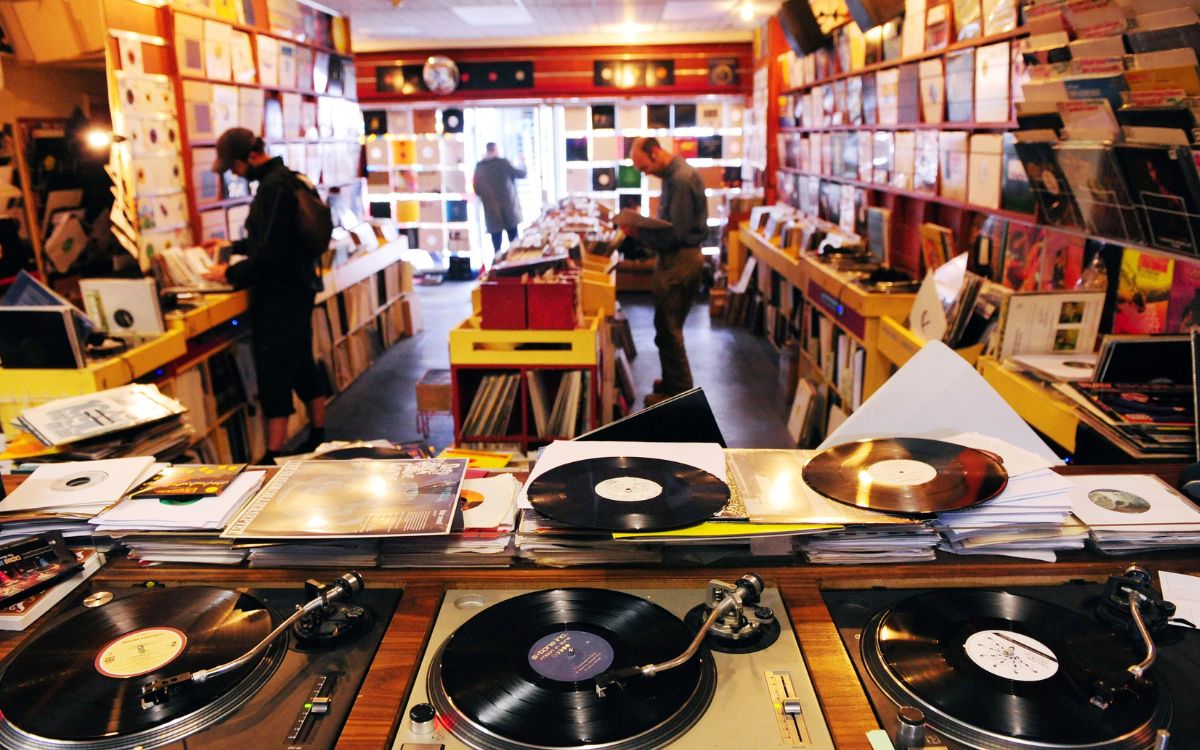Home>Production & Technology>Vinyl>Why Is Music Better On Vinyl
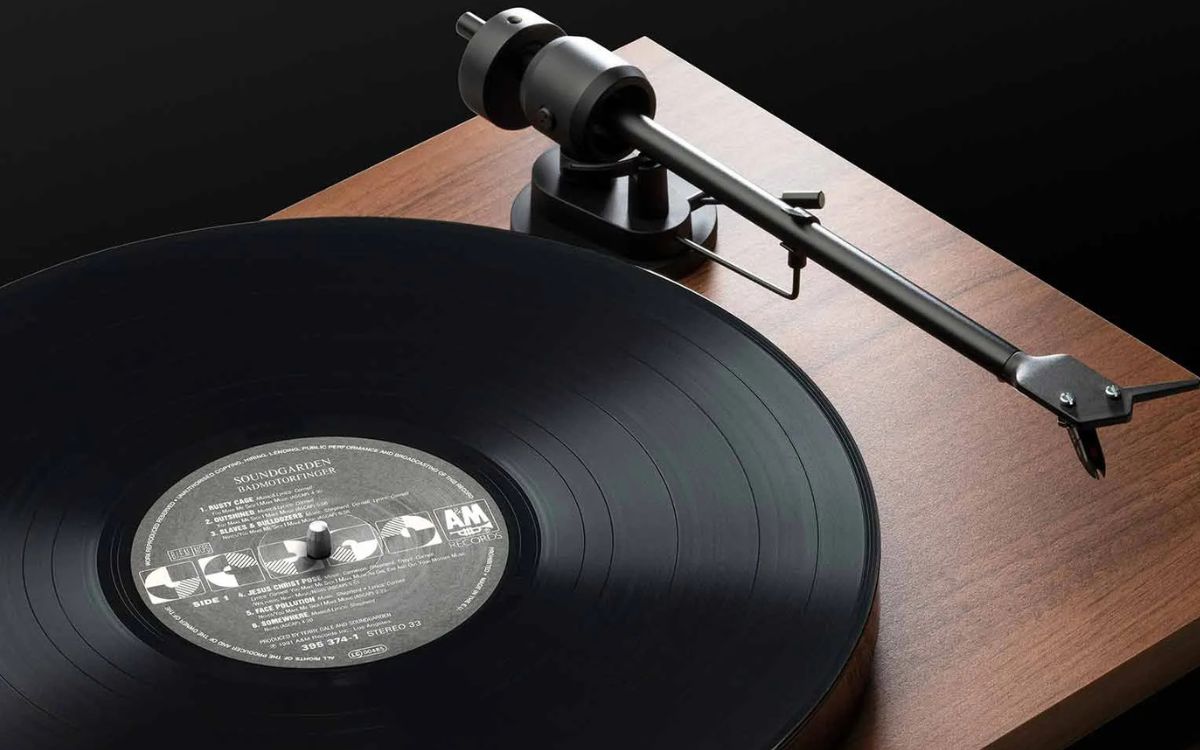

Vinyl
Why Is Music Better On Vinyl
Published: December 9, 2023
Discover why music sounds better on vinyl with our in-depth guide. Explore the warm, rich sound quality and tactile experience that only vinyl records can provide.
(Many of the links in this article redirect to a specific reviewed product. Your purchase of these products through affiliate links helps to generate commission for AudioLover.com, at no extra cost. Learn more)
Table of Contents
Introduction
Vinyl records have made a remarkable resurgence in recent years, captivating music enthusiasts and audiophiles alike. In this digital age where music is easily accessible through streaming services and digital downloads, the allure of vinyl has caught many by surprise. So what is it about vinyl that makes it so enticing?
There is a certain charm to vinyl records that cannot be replicated by any other format. The crackle of the needle as it touches the surface, the warmth of the sound, and the tangible experience of holding a physical record in your hands all contribute to a unique and immersive musical journey. In this article, we will explore the reasons why music is better on vinyl and why this old-school medium continues to captivate both newcomers and long-time enthusiasts.
The resurgence of vinyl is not just a passing trend. It is a testament to the enduring quality and appeal of this format. While digital music offers convenience and accessibility, vinyl provides a more authentic and organic listening experience. So let’s dive into the world of vinyl and discover why it has become the choice of discerning music lovers.
The Resurgence of Vinyl
In an era dominated by streaming services and digital downloads, the unexpected comeback of vinyl is nothing short of remarkable. Vinyl sales have been steadily increasing over the past decade, with 2020 seeing the highest number of vinyl sales in nearly 30 years. So, what has fueled this resurgence?
One of the key factors behind the renewed interest in vinyl is the desire for a more tangible and authentic music experience. In an increasingly digital world, where music is intangible and ephemeral, vinyl offers a physical connection to the music. Holding a vinyl record in your hands, carefully placing it on a turntable, and gently dropping the needle onto the grooves creates a ritualistic experience that is absent in other formats.
Another factor contributing to the resurgence of vinyl is the appreciation for the artwork and packaging. Vinyl records offer a larger canvas for album artwork, allowing for intricate and visually stunning designs. The artwork becomes an integral part of the music, enhancing the overall experience. Additionally, vinyl records often feature gatefold sleeves, lyric booklets, and other elements that add to the aesthetic appeal of the album.
Furthermore, the collectability and rarity of vinyl records have also attracted music enthusiasts. Unlike digital files that can be easily duplicated, vinyl records have a limited supply. Certain records become highly sought after, resulting in a vibrant collector’s market. The thrill of searching for rare and elusive records and the joy of owning a unique piece of musical history is a driving force for many vinyl enthusiasts.
Additionally, the resurgence of vinyl can be attributed to the desire for a higher quality sound experience. While digital formats offer convenience and portability, the compression used in digital audio can cause a loss in detail and dynamic range. Vinyl, on the other hand, provides a warmer and more natural sound that many argue is a truer representation of the original recording. The analog nature of vinyl records captures nuances and subtleties that can be missed in digital formats, creating a richer and more immersive listening experience.
Overall, the resurgence of vinyl can be seen as a reaction against the intangibility of digital music and a longing for a more authentic and immersive musical experience. The combination of tactile engagement, visual appeal, collectability, and superior sound quality has allowed vinyl to carve out a significant niche in the music industry, appealing to both old and new generations of music lovers.
Sound Quality
One of the most compelling reasons why music sounds better on vinyl is the superior sound quality it offers. Vinyl records are known for their warm and rich sound that many argue is unparalleled by digital formats.
Unlike digital audio, which is converted into a series of 0s and 1s and then reconstructed into sound using digital-to-analog converters, vinyl records preserve the original analog signal. As a result, the sound produced by vinyl has a unique and organic quality that maintains the original dynamics and nuances of the recording.
Furthermore, vinyl records have a wider frequency range compared to digital formats, allowing for greater depth and detail in the sound. The grooves on the vinyl capture a more precise representation of the original music, resulting in a more faithful reproduction of the artist’s intent.
The analog nature of vinyl also plays a role in its sound quality. The continuous grooves on the vinyl disc produce a smooth and continuous waveform, which contributes to a more natural and pleasant listening experience. In contrast, digital audio is made up of discrete samples, which can result in a more artificial and less smooth sound.
Moreover, vinyl records tend to have a higher dynamic range compared to digital formats. Dynamic range refers to the difference between the quietest and loudest parts of a recording. Vinyl’s wider dynamic range allows for a greater sense of realism and depth in the music, capturing the subtlest nuances and intricate details that may be lost in heavily compressed digital recordings.
It’s important to note that achieving the best sound quality from vinyl requires proper setup and maintenance. A high-quality turntable, a well-aligned cartridge, clean records, and a good phono preamp are essential components for maximizing the sonic potential of vinyl records.
In summary, vinyl records offer a superior sound quality that is characterized by warmth, detail, and a wider dynamic range. The analog nature of vinyl, coupled with its wider frequency response, results in a more natural and immersive listening experience. If you’re seeking the highest fidelity and a true representation of the artist’s intent, vinyl is the format of choice.
Warmth and Dynamic Range
One of the distinctive characteristics that make vinyl records stand out is the warmth and dynamic range they offer compared to digital formats.
The warmth of vinyl records refers to the rich and full-bodied sound that many enthusiasts find appealing. Vinyl has a natural tendency to soften the harshness that can sometimes be present in digital recordings. The analog nature of vinyl, with its continuous waveform, creates a warmer and more organic sound that is often described as “smooth” and “full.” This warmth adds depth and character to the music, allowing listeners to feel more connected to the performance.
Another aspect of vinyl’s appeal is its wider dynamic range. Dynamic range refers to the difference between the quietest and loudest parts of a recording. Digital formats often employ compression techniques to make music sound louder and more “in your face.” While this may grab immediate attention, it can result in a loss of dynamics and subtle details. Vinyl records, on the other hand, preserve a wider dynamic range, capturing the full spectrum of soft whispers to thunderous crescendos. This wide dynamic range allows for greater nuance, realism, and emotional impact in the music.
Part of the reason for vinyl’s warmth and dynamic range can be attributed to the mastering process. Vinyl mastering engineers are skilled at utilizing the unique characteristics of the medium to enhance the overall sound. They carefully adjust the frequency response and dynamic range to ensure optimal playback on vinyl. As a result, vinyl records offer a more natural and balanced sound that brings out the full potential of the music.
It’s also worth noting that the process of vinyl playback itself contributes to the warmth and dynamic range. The analog nature of vinyl, coupled with the mechanical process of the needle riding the grooves, can add a certain warmth and texture to the sound. The gentle imperfections and subtle distortions that come with vinyl playback can enhance the overall listening experience, giving the music a sense of authenticity and character.
In summary, the warmth and dynamic range of vinyl records are key factors that contribute to their appeal. The natural warmth of vinyl, along with its wider dynamic range, captures the nuances and emotional depth of the music. Whether it’s the soft whisper of a delicate ballad or the explosive climax of a symphony, vinyl provides a more immersive and engaging listening experience that is cherished by music enthusiasts worldwide.
Tangible Experience
In a world where intangible digital files dominate the music landscape, vinyl records offer a refreshing and tangible experience that simply cannot be replicated. The physicality of vinyl adds a layer of interaction and engagement that transcends the act of simply listening to music.
When you hold a vinyl record in your hands, feeling its weight and texture, you establish a physical connection to the music. The act of carefully removing the record from its sleeve, gently placing it on the turntable, and delicately lowering the needle onto the grooves becomes a ritualistic experience. There is a sense of anticipation and excitement as the music begins to play, immersing you in a unique sonic journey.
Furthermore, the large album artwork and packaging of vinyl records contribute to the tangible experience. The 12-inch size of a vinyl record allows for intricate and visually striking album artwork. The cover art becomes an integral part of the music, evoking emotions and setting the mood even before the first note is played. Holding the album artwork in your hands and examining the finer details creates a deeper connection to the music and the artist’s vision.
The physical nature of vinyl also encourages dedicated listening. Unlike digital formats that can be easily skipped or shuffled, playing a vinyl record requires commitment and attention. As the record spins, you become fully immersed in the music, experiencing it as a cohesive body of work, intended to be listened to from start to finish. This focused and intentional listening allows for a deeper appreciation and understanding of the music.
Moreover, the ritual of maintaining and caring for vinyl records adds to the tangible experience. Cleaning the records, properly storing them in protective sleeves, and ensuring the turntable is in good condition become part of the process. This hands-on involvement fosters a deeper connection and sense of ownership over the music, as well as a greater appreciation for the art and craftsmanship that goes into vinyl records.
The tangible experience of vinyl extends beyond the auditory and visual senses, tapping into a multi-sensory realm. From the feeling of the record in your hands to the smell of the vinyl as it spins on the turntable, vinyl offers a holistic experience that engages multiple senses and creates lasting memories.
In summary, the tangible experience of vinyl records is a significant part of their appeal. The physical connection, engagement with album artwork, dedicated listening habits, and hands-on maintenance all contribute to a deeper and more immersive musical experience. Vinyl transcends the boundaries of being a mere medium for music; it becomes a cherished and tangible piece of art that can be enjoyed and appreciated for years to come.
Album Artwork and Packaging
One of the distinct pleasures of vinyl records is the larger canvas they provide for album artwork and the thoughtfully designed packaging that accompanies them. Vinyl records offer a unique opportunity for artists to create visually striking and immersive album covers that complement the music they contain.
The 12-inch size of vinyl records allows for intricate and detailed artwork that can be appreciated in all its glory. Artists and designers can unleash their creativity, using the larger space to convey the themes, emotions, and stories behind the music. From vibrant illustrations to captivating photographs, album covers on vinyl become works of art in their own right, capable of captivating and intriguing listeners even before the needle touches the grooves.
Album covers on vinyl not only provide visual appeal, but they also serve as gateways into the artist’s world. The cover art sets the tone and atmosphere for the music that lies within. It can evoke curiosity, spark imagination, and create a sense of anticipation. The artwork becomes an integral part of the overall music experience, influencing the listener’s perception and interpretation of the songs.
In addition to the album artwork, vinyl records often come packaged with additional elements that further enhance the experience. Gatefold sleeves, for instance, are common in vinyl packaging and offer expansive spaces for artwork, lyrics, and additional information about the album. Opening a gatefold sleeve and exploring its contents adds to the excitement and joy of delving deeper into the music.
Many vinyl records also include lyric booklets, posters, or inserts that provide added value for the listener. These extras allow fans to experience the music in a more intimate and immersive way. Reading the lyrics while listening to the music provides a deeper connection to the artist’s words, helping to uncover hidden meanings and emotional nuances within the songs.
The physicality of vinyl records and their packaging creates a more interactive and tactile experience. Flipping through the record collection, holding a record in your hands, and carefully placing it on the turntable all contribute to the overall enjoyment and engagement with the music. The sensory experience of handling vinyl, appreciating the artwork, and exploring the packaging adds a layer of pleasure that goes beyond the auditory realm.
In summary, vinyl records offer a unique platform for visually captivating album artwork and thoughtfully designed packaging. The larger canvas allows for intricate and detailed artwork that sets the tone and atmosphere for the music. Additional elements such as gatefold sleeves, lyric booklets, and inserts further deepen the connection between the listener and the music. The physical nature of vinyl and its packaging add to the overall immersive and tactile experience, making vinyl records cherished collector’s items that tantalize multiple senses.
Collectibility and Rarity
One of the enduring appeals of vinyl records is the collectibility and rarity associated with them. Unlike digital files that can be easily replicated, vinyl records have a limited supply, making each record a unique and sought-after treasure for collectors.
One aspect that adds to the collectibility of vinyl records is the notion of limited editions and special releases. Artists and record labels often produce limited quantities of certain albums, creating a sense of exclusivity and desirability among collectors. Limited edition vinyl records may come in unique colors or feature special packaging, making them highly sought after by collectors who want something unique to add to their collection.
Besides limited editions, vinyl records also gain value and rarity over time due to various factors. Some records may have been produced in smaller quantities, making them harder to find and therefore more valuable in the collector’s market. Additionally, older records from specific eras or genres may have become rare due to factors like limited distribution, label disputes, or discontinuation of production.
The hunt for rare and elusive vinyl records has become a thrilling experience for collectors. Scouring record stores, online marketplaces, and flea markets for that one elusive gem is part of the joy of collecting vinyl. The thrill of stumbling upon a rare record, often at a bargain price, is a moment of triumph that collectors cherish.
Furthermore, vinyl records hold sentimental value for many collectors. They may have personal memories associated with specific albums or artists, and owning the vinyl version allows them to connect with those nostalgic moments. Vinyl’s tangibility and the cultural history behind certain albums make them artifacts of musical history that collectors value and preserve.
In recent years, the demand for vinyl records has surged, driving up prices for certain albums in the collector’s market. Rare and highly sought-after records by iconic artists or cult favorites can command significant prices, with some records fetching hundreds or even thousands of dollars. This market value further adds to the allure of collecting vinyl records as an investment or a hobby that holds the potential for appreciation over time.
In summary, the collectability and rarity of vinyl records make them prized possessions for collectors. Limited editions, special releases, and scarcity due to various factors contribute to the exclusivity and desirability of vinyl records. The thrill of hunting for rare gems and the sentimental value associated with specific albums make vinyl collecting an engaging and rewarding pursuit that transcends the mere ownership of music.
Nostalgia and Sentimentality
Another compelling reason why music is often considered better on vinyl is the nostalgia and sentimentality that this format evokes. Vinyl records have a unique ability to transport us back to a different era and evoke memories of a time gone by.
For many, vinyl records are a tangible connection to their past. They represent a time when music was experienced in a different way, where sitting down to listen to an album from start to finish was a cherished activity. The crackling sound of the needle hitting the record and the warmth of the analog sound bring back memories of simpler times, when music was the centerpiece of social gatherings and personal escapes.
Furthermore, vinyl records often carry sentimental value linked to personal experiences and emotions. The records we inherited from our parents or grandparents, the albums given as gifts by loved ones, or the records bought on special occasions, all hold a special place in our hearts. The act of pulling out these records and playing them on a turntable is a way to reconnect with cherished memories and evoke the emotions associated with those moments.
Vinyl is also deeply tied to the history of music, especially for those who grew up during the heyday of vinyl records. It represents the golden era of iconic albums and legendary artists. Hearing those beloved songs on vinyl transports listeners back to the time when those records were released, and the emotions and experiences that accompanied them.
The physical presence of vinyl records also contributes to the nostalgic experience. Holding a vinyl record in your hands, flipping through the artwork, and carefully placing it on the turntable create a sense of connection with the music and the past. The tactile experience of vinyl engages our senses in a way that digital formats cannot replicate.
Moreover, vinyl records provide a respite from the fast-paced, digitized world we live in. They offer a chance to disconnect from screens and distractions and immerse ourselves in a timeless musical experience. The intentional act of setting aside time to listen to vinyl allows us to slow down, appreciate the music, and be present in the moment.
In summary, vinyl records evoke nostalgia and sentimentality in a way that digital formats often cannot. The physical connection, sentimental value, and ties to personal memories make vinyl a powerful medium for transporting us to different eras and invoking emotions associated with those times. Vinyl allows us to appreciate music not only for its sonic qualities but also for the memories, emotions, and connection it brings with it.
Conclusion
Vinyl records have experienced a remarkable resurgence in recent years, capturing the hearts of music enthusiasts and audiophiles worldwide. The reasons why music is better on vinyl are multifaceted, encompassing factors ranging from sound quality and warmth to the tangible experience of vinyl and its unique packaging.
Vinyl records offer a superior sound quality characterized by warmth, depth, and a wider dynamic range. The analog nature of vinyl captures the nuances and subtleties of the music in a way that digital formats often can’t replicate. Listening to vinyl is not just about the music; it’s an immersive experience that engages multiple senses and creates lasting memories.
The tactile experience of handling vinyl records, exploring their artwork and packaging, and the intentional act of playing them on a turntable adds an extra layer of enjoyment and connection to the music. Vinyl transcends being a mere medium for music; it becomes a cherished artifact of art that holds sentimental value and enhances the overall appreciation of the album.
Furthermore, vinyl records have a collectibility and rarity that adds a thrill to the hobby of collecting. The hunt for rare and limited-edition records, along with their increasing market value, makes collecting vinyl a rewarding and captivating pursuit for many.
Lastly, the nostalgia and sentimentality associated with vinyl records make them deeply resonant with music lovers. Vinyl evokes memories, transports us to different eras, and allows us to reconnect with cherished moments and emotions associated with the music.
In conclusion, vinyl records offer a unique and engaging way to experience music. They provide superior sound quality, a tangible and immersive experience, collectibility, and a nostalgic connection to the past. Embracing the joys of vinyl allows us to savor the magic of music in its purest and most authentic form.

